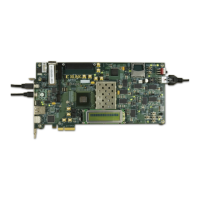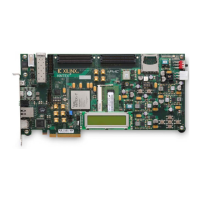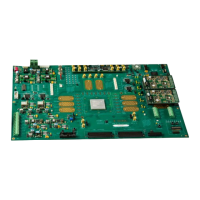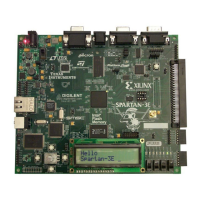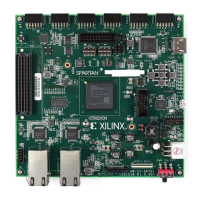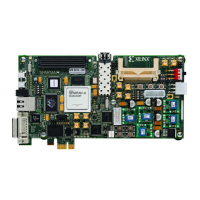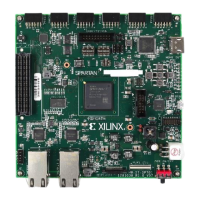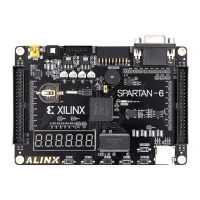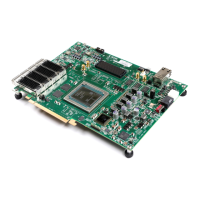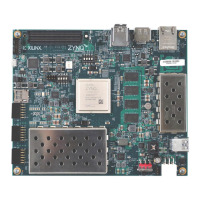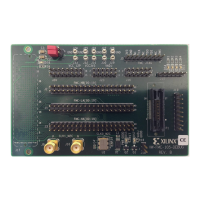12 www.xilinx.com Spartan-6 FPGA PCB Design and Pin Planning
UG393 (v1.1) April 29, 2010
Chapter 1: PCB Technology Basics
dielectric constant of the material in the space around the signal trace and between the
signal trace and the reference plane.
The dielectric constant of the material in the vicinity of the trace and reference plane is a
property of the PCB laminate materials, and in the case of surface traces, a property of the
air or fluid surrounding the board. PCB laminate is typically a variant of FR4, though it can
also be an exotic material.
While the dielectric constant of the laminate varies from board to board, it is fairly constant
within one board. Therefore, the relative impedance of transmission lines in a PCB is
defined most strongly by the trace geometries and tolerances. Impedance variance can
occur based on the presence or absence of glass in a local portion of the laminate weave,
but this rarely poses issues except in high-speed (>6 Gb/s) interfaces.
Return Currents
An often neglected aspect of transmission lines and their signal integrity is return current.
It is incorrect to assume that a signal trace by itself forms a transmission line. Currents
flowing in a signal trace have an equal and opposite complimentary current flowing in the
reference plane beneath them. The relationship of the trace voltage and trace current to
reference plane voltage and reference plane current defines the characteristic impedance of
the transmission line formed by the trace and reference plane. While interruption of
reference plane continuity beneath a trace is not as dramatic in effect as severing the signal
trace, the performance of the transmission line and any devices sharing the reference plane
is affected.
It is important to pay attention to reference plane continuity and return current paths.
Interruptions of reference plane continuity, such as holes, slots, or isolation splits, cause
significant impedance discontinuities in the signal traces. They can also be a significant
source of crosstalk and contributor to Power Distribution System (PDS) noise. The
importance of return current paths cannot be underestimated.
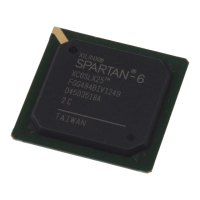
